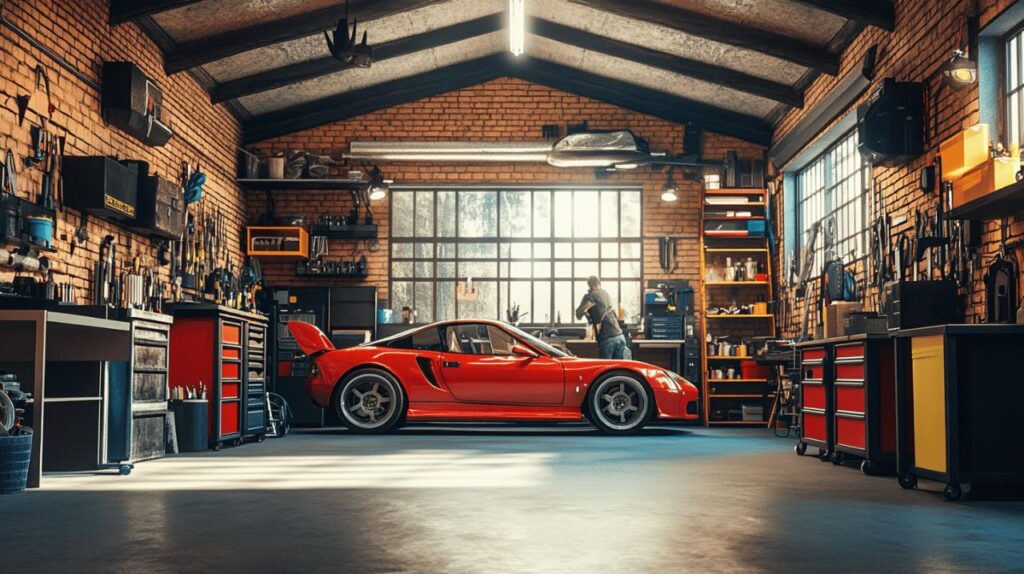Maintaining your vehicle regularly isn't just about keeping it looking good—it's essential for safety, performance, and protecting your investment. With proper care, you can extend your car's lifespan significantly while avoiding costly repairs down the road. Let's explore comprehensive maintenance strategies that every vehicle owner should follow.
Essential fluid checks for vehicle longevity
The lifeblood of your vehicle lies in its various fluids, each serving a crucial function in keeping your car running smoothly. Motor Publish experts consistently emphasize that regular fluid checks are among the most fundamental maintenance tasks that can prevent major mechanical failures.
Understanding When and How to Check Your Engine Oil
Engine oil lubricates vital engine components, reducing friction and preventing overheating. Check your oil level every month by parking on level ground, waiting until the engine has cooled, and using the dipstick to verify both quantity and quality. A recent survey revealed concerning statistics: while 15.1% of drivers changed their engine oil within the last three months, a worrying 20.45% admitted they had never changed it at all! For most vehicles, oil should be changed every 3,000 to 10,000 miles, depending on your car's age and manufacturer recommendations.
Monitoring coolant, brake, power steering, and windscreen fluids
Beyond oil, several other fluids demand regular attention. Coolant prevents your engine from overheating and freezing in extreme temperatures. The colour should be bright, not brown or black, which indicates contamination. Brake fluid requires checking monthly, as low levels can lead to brake failure. Power steering fluid ensures smooth steering operation, while adequate windscreen wash is not only a legal requirement but essential for visibility during adverse weather conditions. The FORCES checklist (Fuel, Oil, Rubber, Coolant, Electrics, and Screen wash) provides an excellent framework for remembering these vital checks.
Tyre care and management
Tyres represent your only contact with the road, making their maintenance critically important for safety and performance.
Proper tyre pressure monitoring techniques
Check tyre pressures at least every two weeks and before long journeys. Incorrect pressure leads to uneven wear, reduced fuel efficiency, and compromised handling. Modern vehicles built after November 2014 feature Tyre Pressure Monitoring Systems (TPMS), but manual checks remain essential. The recommended pressure for your vehicle can be found in the owner's manual, inside the fuel filler cap, or on the driver's door pillar. Remember that pressures may need adjusting based on load and weather conditions.
Checking Tread Depth and Signs of Wear
UK law mandates a minimum tread depth of 1.6mm across the central three-quarters of the tyre, though experts recommend at least 3mm for winter driving. Examine tyres regularly for bulges, cuts, and uneven wear patterns, which might indicate alignment or suspension issues. Rotate tyres according to your manufacturer's schedule to promote even wear and extend their lifespan. Tyres remain one of the most common MOT failure points, so diligent monitoring can save both money and inconvenience.
Brake system maintenance
Your vehicle's braking system demands special attention as it directly impacts safety.
Recognising warning signs of brake problems
Several indicators suggest brake system issues that require immediate attention. Listen for squealing, grinding, or scraping noises when braking. Feel for vibrations, pulsations, or sponginess in the brake pedal. Watch for the vehicle pulling to one side during braking or an illuminated brake warning light. Also note if stopping distances increase, as this could indicate worn brake components. Regular inspection of brake fluid levels provides another early warning system for potential problems.
Brake pad replacement guidelines
Brake pads typically require replacement every 20,000 to 60,000 miles, depending on driving habits and conditions. Visual inspection can help determine wear levels, with most pads featuring wear indicators that produce a high-pitched squeal when replacement is needed. Always replace brake pads in axle pairs for balanced braking performance. While some enthusiasts might tackle this job themselves, professional inspection ensures all components receive proper evaluation, including discs, calipers, and hydraulic systems.
Professional servicing schedules
While regular owner checks are vital, professional servicing provides comprehensive care that home maintenance cannot match.
Adhering to manufacturer's service intervals
Your vehicle's handbook outlines specific service intervals based on time or mileage. Modern cars typically require servicing annually or every 10,000-12,000 miles, whichever comes first. These intervals aren't arbitrary suggestions but carefully calculated maintenance points designed to prevent component failure and maintain warranty coverage. Some manufacturers offer variable service intervals based on driving conditions and electronic monitoring of vehicle systems. Following these schedules religiously helps maintain not only mechanical integrity but also resale value.
What to expect during routine vehicle services
Services generally fall into minor (interim) and major (full) categories. A minor service typically includes oil and filter changes, fluid top-ups, and visual inspections of key components. A major service adds more comprehensive checks and replacements, including spark plugs, air filters, and timing belt inspections. Professional technicians also access diagnostic systems to identify electronic issues and reset service indicators. Quality service centres provide detailed reports explaining work performed and highlighting potential future concerns, allowing for financial planning and preventative care.
Crucial component replacements
 Certain components require periodic replacement to maintain optimal vehicle performance.
Certain components require periodic replacement to maintain optimal vehicle performance.
Air Filter Maintenance and Its Impact on Performance
The engine air filter prevents dust, dirt, and debris from entering your engine, where they could cause internal damage. A clogged filter restricts airflow, reducing power and fuel economy. Most manufacturers recommend replacement every 12 months or 12,000 miles, though dusty environments may necessitate more frequent changes. The cabin air filter also deserves attention, as it affects interior air quality and heating/cooling efficiency. Replacing these filters represents an inexpensive maintenance task that yields significant performance benefits.
Spark plug replacement and engine efficiency
Spark plugs ignite the fuel-air mixture in petrol engines, making them critical for combustion efficiency. Modern plugs typically last 30,000-40,000 miles, though premium platinum or iridium versions may extend to 100,000 miles. Warning signs of failing spark plugs include rough idling, difficulty starting, engine misfires, and increased fuel consumption. Diesel engine owners should monitor glow plugs, with a survey indicating 65.36% of diesel owners had replaced them recently. Regular replacement maintains optimal engine performance, improves fuel economy, and reduces emissions.
Vehicle cleanliness inside and out
Vehicle cleanliness extends beyond aesthetics to affect functionality and longevity.
Exterior Cleaning to Prevent Rust and Paint Damage
Regular washing removes corrosive substances like road salt, bird droppings, and tree sap that damage paintwork. Pay special attention to wheel arches, undercarriage, and panel seams where moisture and contaminants accumulate. Waxing every six months creates a protective barrier against environmental damage. Clean lights and number plates not only improve visibility but also ensure compliance with legal requirements. Remove debris from drain channels and sunroof tracks to prevent water ingress and potential electrical issues.
Interior Maintenance for Comfort and Value Preservation
Interior cleanliness affects both comfort and component longevity. Vacuum regularly to remove abrasive dirt and prevent premature wear of upholstery. Clean dashboard surfaces and controls to maintain functionality and appearance. Remove unnecessary items that add weight and reduce fuel efficiency. Address spills promptly to prevent staining and odours. Clean air vents to improve heating and cooling efficiency while reducing allergens. A well-maintained interior significantly impacts passenger comfort and contributes substantially to resale value.
Preventative maintenance approach
Adopting a preventative mindset transforms vehicle care from reactive to proactive.
Identifying minor issues before they escalate
Pay attention to subtle changes in your vehicle's performance, sounds, or handling. Investigate warning lights immediately rather than hoping they'll resolve themselves. Address small leaks before they become major fluid losses. Listen for unusual noises, especially when turning, braking, or accelerating. Note changes in fuel consumption, which often indicate developing problems. Perform regular visual inspections of key components like belts, hoses, and wiring. This vigilance allows you to address minor issues before they escalate into major mechanical failures.
Cost benefits of regular maintenance versus major repairs
The financial advantages of preventative maintenance prove substantial when compared to emergency repairs. Regular oil changes costing £100-200 annually prevent engine rebuilds exceeding £2,000. Timing belt replacement at around £300-500 avoids catastrophic engine damage potentially costing thousands. Brake pad replacement at £150-300 prevents more expensive rotor and caliper damage. Beyond direct costs, preventative maintenance minimises inconvenience, reduces vehicle downtime, and avoids emergency repair premiums. This approach transforms maintenance from an expense into an investment that pays dividends through extended vehicle lifespan and reliability.
Maintenance documentation
Documenting your vehicle's maintenance history provides numerous benefits throughout ownership.
Creating an effective vehicle service record system
Maintain a dedicated maintenance logbook recording all services, repairs, and component replacements with dates, mileage, and costs. Keep all invoices and service documents in a single location, either physically or digitally. Consider using vehicle maintenance apps that send reminders for upcoming service needs. Document regular checks like fluid levels and tyre pressures. Take photographs of concerning issues for reference when consulting mechanics. This systematic approach ensures no maintenance tasks slip through the cracks while providing a comprehensive history of your vehicle's care.
How detailed maintenance records affect resale value
Comprehensive maintenance documentation significantly enhances resale prospects. Well-maintained vehicles with complete service histories typically command 10-15% higher resale values than identical models lacking documentation. Buyers willingly pay premiums for vehicles with proven care. Complete records demonstrate transparency and build buyer confidence. Documented manufacturer-recommended servicing provides reassurance about hidden problems. Warranty validation often depends on service documentation. This record-keeping effort requires minimal time investment while potentially yielding hundreds or thousands in additional resale value.
By following these comprehensive maintenance guidelines, you'll enjoy improved reliability, enhanced safety, better fuel efficiency, and higher resale value from your vehicle. Remember that consistent attention to small details prevents major problems, making regular maintenance the most cost-effective approach to vehicle ownership.

